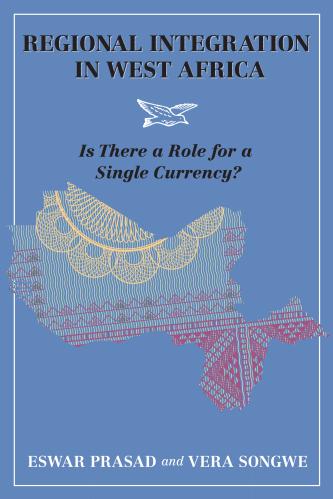The pandemic downturn has heightened one of the gravest challenges facing Africa on its development path—the high costs of perception premiums—the overinflated risks perennially assigned to Africa, irrespective of its improving macroeconomic fundamentals, the global economic environment, and individual countries’ growth prospects. The global nature of the pandemic downturn offers an opportunity to scrutinize the extent to which perception premiums are shaping the distribution of sovereign risk across countries and regions; the disproportionately larger number of African nations affected by procyclical downgrades further supports the premium hypothesis.
Over 56 percent of African countries rated by at least one of the big three credit rating agencies (Standard & Poor’s, Fitch, and Moody’s) were downgraded at the height of the pandemic in 2020, while only 9.2 percent in Europe and 28 percent in Asia were—leading to a global average of 31.8 percent. The disproportionate downgrading occurred despite the fact that Africa showed greater growth resilience in the face of the pandemic-triggered synchronized global downturn, contracting by less than 2 percent, against a world average of 3.3 percent.
Still, African countries continue to face higher premiums, with long-lasting consequences. In the short term, these premiums heighten the risk of debt overhang and constrain fiscal space, undermining governments’ capacity to respond effectively to recurrent adverse global shocks—as the challenges associated with the management of the COVID-19 crisis have illustrated. While the significantly lower interest rates—negative in real terms—have enabled advanced economies to navigate the pandemic downturn effectively by extending large monetary and fiscal stimulus, the growth-crushing and default-driven borrowing rates on African assets have set the stage for a divergent recovery and are heightening the risk of debt overhang.
These premiums also have wide-ranging consequences for macroeconomic management and sustainable development in the long run. By deterring investors and limiting access to long-term financing, they exacerbate liquidity constraints and undermine the process of economic transformation necessary for Africa’s effective integration into the global economy, ensnaring countries in a perpetual debt-distress trap that threatens global financial stability.
Calls by a growing number of leaders to address this problem are steps in the right direction. For example, at the World Bank-IMF Annual Meetings—held virtually in October 2020—IMF Managing Director Kristalina Georgieva remarked that “a great deal of attention needs to concentrate on reducing the perceived and real risk for investing in Africa, so we can see this huge availability of financing for the rest of the world trickle down into Africa.” Earlier this year, French President Emmanuel Macron, who has called for “fairer financing rules for African economies,” hosted a summit on the financing of African economies. Indeed, a strong commitment by and effective coordination among stakeholders will be critical for the emergence of an international financial architecture that fosters a globally inclusive approach to affordable development financing.
What can and should be done?
For African nations, governments should intensify ongoing efforts to improve information architecture, deepen economic and institutional reforms, and accelerate the implementation of the African Continental Free Trade Agreement (AfCFTA) to drive the diversification of sources of growth and exports and broaden the tax base. As the pandemic unfolded, Fitch, in a dramatic “multi-notch move,” downgraded Gabon’s sovereign rating to CCC from B, largely on the grounds that falling oil prices would widen the country’s twin deficits and undermine the government’s capacity to honor commitments to external creditors. Standard & Poor’s downgraded Botswana, a leading diamond exporter and the only African country with an A- rating, for the same reason. Economic diversification will reduce the unhealthy correlation between growth and commodity price cycles and sustainably boost the growth of foreign reserves and government revenues to put the region on the path toward long-term fiscal and debt sustainability, both of which are credit rating-positive.
But to extricate Africa from this vicious cycle—one in which the colonial development model of resource extraction is both a risk driver and a deterrent to long-term development financing—African sovereign risk models must integrate the diversity of African countries and their brightening economic outlook. Low debt-to-GDP levels and robust economic growth should be positively correlated with sovereign credit scores for greater consistency and enticements on the path towards macroeconomic reforms. As strong economic reformers are rewarded by increasing access to sustainable development financing, incentives for more countries to embrace difficult reforms could follow, kick-starting a virtuous cycle of growth acceleration fueled by globally competitive access to affordable development financing.
At the same time, rating agencies should refrain from procyclical downgrades, which often trigger sudden stops and reversals in capital flows in a “flight to quality,” and should instead capture debtors’ long-term perspective. By increasing borrowing costs and heightening liquidity constraints, procyclical downgrades can prolong and deepen economic crises. For instance, by heightening balance of payment pressures and undermining investment growth, persistent liquidity crises can morph into long-lasting solvency crises and cascading defaults. Fostering transparency and strengthening coordination between the IMF and credit-rating agencies will ensure greater consistency and gradually alleviate the perception gaps driving procyclical downgrades and Africa’s ruinous premiums.
While sovereign credit ratings have a direct impact on an affected country’s ability to mobilize long-term financing, the consequences of large-scale procyclical downgrades can be far-reaching, with potential risks for international financial stability. A globally coordinated approach that fosters accountability and transparency in the production of consistent estimates of sovereign risks will be more effective in regulating the business practices of rating agencies. Such a body could follow the models set by the U.S. Securities and Exchange Commission and the European Securities and Markets Authority. Except for South Africa, which assigned its Financial Services Board to administer the Credit Rating Services Act 2012 and oversee the operations of credit-rating agencies, no other country in the region has a similar structure.
In the medium and long terms, the development of domestic capital markets that are deep, efficient, and well-regulated will be vital for diversifying funding sources and reducing liquidity and foreign currency risks. These markets will reduce the dependency on foreign currency debt and improve countries’ ability to withstand volatile capital outflows. They will provide a secure and stable source of financing, while also helping countries build proper yield curves to improve investment decisions and sustain them on a long-run trajectory of robust economic growth. At the same time, they will increase the effectiveness of monetary policy and eventually set countries on the path of cyclical improvement in liquidity and borrowing costs.
That being said, making progress on the development of vibrant local-currency government bond markets in the region will require transcending national constructs to integrate fragmented and highly illiquid financial markets to mirror the game-changing continental trade integration reform underpinned by the African Continental Free Trade Agreement. Thereafter, the emergence of a continental financial ecosystem that fosters the development of a money market to provide short-term liquidity to governments, commercial banks, and other large institutions—as well as a vibrant repo market to provide collateralized interest-bearing loans to meet short-term funding and liquidity—will be the next critical piece of economic stability and sustainable development financing puzzle in Africa.
Notably, while a vibrant money market is a necessary condition for the emergence of successful and liquid securities markets, the development of a local repo market is key to enhancing the money and bond market nexus. Still, success in the development of local sovereign bond markets also hinges on intensifying reforms to improve Africa’s regulatory and policy environment and foster policy consistency.
The perceived quality of the institutional setting, which has been singled out as a key driver of market access, is credit rating-positive. When combined with the diversification of sources of growth and exports, which will reduce the correlation between growth and commodity price cycles and cultivate Africa’s foreign reserve assets, this will act as a credit rating enhancer and multiplier, putting the region on a long-run trajectory of fiscal and debt sustainability.
Over time, that mutually reinforcing combination of institutional reforms and diversification of sources of growth will stimulate global demand for African assets and gradually narrow the credit spreads of African issuers of sovereign and corporate bonds to equalize access to the global pool of financial resources and unlock competitive global capital for sustainable economic development.
For more on this issue, see my recent paper, “The ruinous price for Africa of pernicious ‘perception premiums.’”
The Brookings Institution is committed to quality, independence, and impact.
We are supported by a diverse array of funders. In line with our values and policies, each Brookings publication represents the sole views of its author(s).








Commentary
Addressing the perception premium for sustainable development in Africa
October 8, 2021